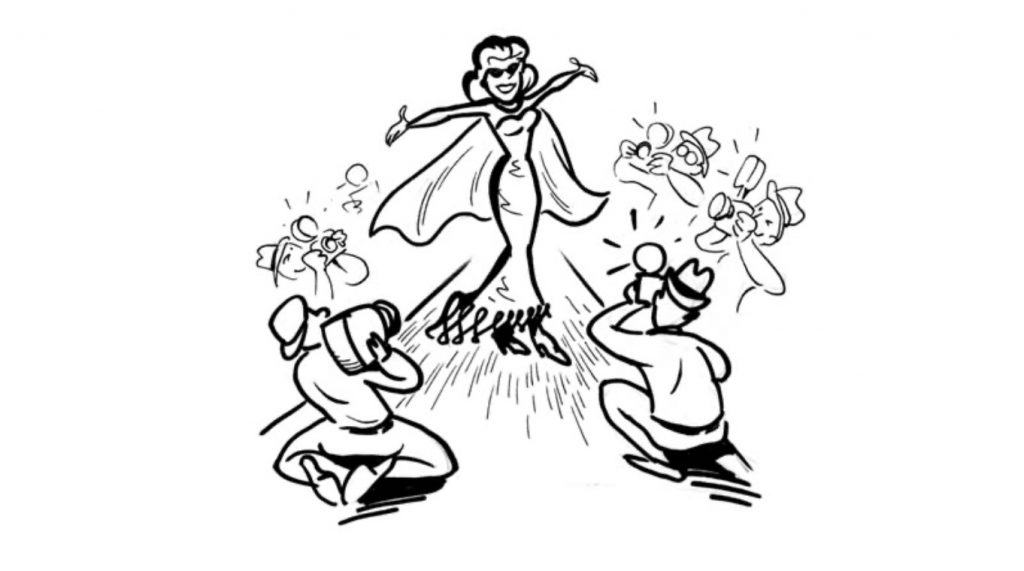You scored big with the reporter. You created the ultimate media event. You whipped up a stunt so stunning P.T. Barnum would be proud. Now what?
The fame game can be fleeting. So if you don’t want to become a one-hit wonder, read on.
BUILD RAPPORT BEFORE THE REPORTER HITS THE DOOR
There are a lot of names for it. Some call it building rapport; others call it schmoozing. It really doesn’t matter what you call it; just do it. Reporters are human. We develop friendships with the people we do stories on, which often plays a role in whether someone gets covered year after year.
How do you do that, you ask? Just do what you would do with anyone you wanted as a friend. Be kind. Treat the reporter with respect. Be aware of our deadlines. If the reporter seems rushed, it’s because we usually are. Most of us have just a few hours to get a story on the air. So do whatever you can to help speed things along.
Ask how you can help make the story better. Few of your encounters with reporters will be confrontational, so think of yourself as an assistant producer. Do what you can to help make the story the best it can be. Does the reporter need more information? Get on it. Does he or she need another interview that you didn’t anticipate? Help line it up. Whatever you can do to make the reporter’s job easier, will pay off.
I’m not saying you need to become best pals with every reporter you run across. But treat them all with courtesy and make their experience so good they’ll want to use you again.
BE AVAILABLE
Make sure the reporter knows that you are always available. Believe me, you’ll move up in the reporters Rolodex if you are available for an interview at a moment’s notice.
Most reporters work on a tight deadline. When we call you for a story, most of the time it’s not for tomorrow or next week. We want you to drop whatever you are doing and make time for us immediately. Tomorrow the story I’m working on now will be yesterday’s news, so if you don’t want to be yesterdays news as well, be available.
BE APPROPRIATE
Nothing will destroy your relationship with a reporter faster than pitching a story that’s completely inappropriate. Before you ever send out a press release, make sure you ask yourself the question, “How is this going to play with the public?”
A TV news manager told me a horror story from her days in St. Louis. During the mid-’80s when the homeless prob-lem was in the news, a gourmet coffee company came up with a truly tasteless way to promote a new brew.
“They sent out news releases inviting the media to a local homeless shelter to get shots of the company mascot delivering coffee to the needy,” she remembered. “We were shocked when we read that an actor wearing a traditional Colombian folk costume was going to ride in on a donkey to introduce the product. The news release went right in the trash. I don’t think any station sent a camera.”
That happened almost twenty years ago, and she still remembers it like it was yesterday. You can see how one bad publicity stunt can ruin your company’s reputation with the media for years.
NEVER VIOLATE A REPORTER’S TRUST
It’s one thing to get a phone call from someone saying, “This is the greatest story you’ve ever heard.” We’re used to exaggeration, but don’t lie. Trust is everything to a reporter. If we can’t trust you as a source, you will no longer be a source.
Reporters are supposed to check all facts, but the truth is when we are under a tight deadline, we can’t chase down the source of every statistic in a press release. Many reporters will end up quoting what you’ve given them word-for-word. So make sure your facts are straight. If the reporter later discovers he put bad information on the air, your credibility as a source is destroyed.
THANK-YOU NOTES
After the story airs or is in print, send a thank-you note for the coverage. That simple gesture goes a long way, yet it amazes me how few take the time to do it. I’d say only one out of every hundred people I put on the news ever bothers to call or write to thank me.
And it shouldn’t stop there. Take an interest in the reporters and the stories they cover. Later you might want to drop them a note for no reason other than to compliment them on a good report. Let them know that you’re always keeping your eye out for other good stories to give them. Every contact keeps your name in front of them and continues to build goodwill.
GET REPORTERS CALLING YOU
Most of the time people call begging us to do a story on them. However, some people have been the source of so many great stories, I find myself calling them begging for news. Now that’s the situation you want to find yourself in. When the reporters are contacting you out of the blue instead of the other way around, you’ve truly arrived!
THE BUZZ ON REPORTERS
Keep in mind that many reporters are assigned specialities. In most newsrooms, the beats have names like police and courts, business, investigative, and features. Find out who is covering your beat and try to establish an ongoing relationship. For instance, for much of my career my specialty has been the end-of-the-newscast “leave ’em laughing” piece.
Several years ago, I met a beekeeper named David Lister on a story. He removes bees from homes for a living. One of the first stories we did together was about his unusual car. Because he bills himself as a Beebuster, he went out and got an old ambulance like the kind used in the movie Ghostbusters. And his logo? You guessed it. Instead of a ghost with a slash through it, he has a crossed-out bee.
It gets better. He has a cassette with the Ghostbusters theme that he blasts whenever he’s at a stoplight, just to draw attention to his business.
Well, he’s such a character and his stories are always so memorable, I’ll call him once a month just to see if he has any upcoming big bee removal jobs. I’ve probably used David a dozen times in the last decade, and each time he’s on the air, new customers keep his phone ringing for days.
And talk about thank you notes, David is so grateful for our coverage that each year at Christmas he pulls up to the station in his beemobile and delivers a few dozen bottles of honey to the staff. The honey comes from the hives of confiscated bees he keeps at home. And each bottle is labeled with David’s Beebuster logo. Marketing genius? I don’t know about that, but I do know he never buys advertising. He’s charmed enough members of the media over the years that he doesn’t need money, just honey, to keep his business buzzing.
NEWS YOU CAN USE
- Build rapport with reporters. You can never have too many friends in the media.
- Make sure your stories are always appropriate. Always ask yourself, “How will this play with the public?”
- Never, ever burn a reporter with bad information.
- A thank-you note goes a long way.
- If you consistently deliver strong stories, the media will beat a path to your door.

